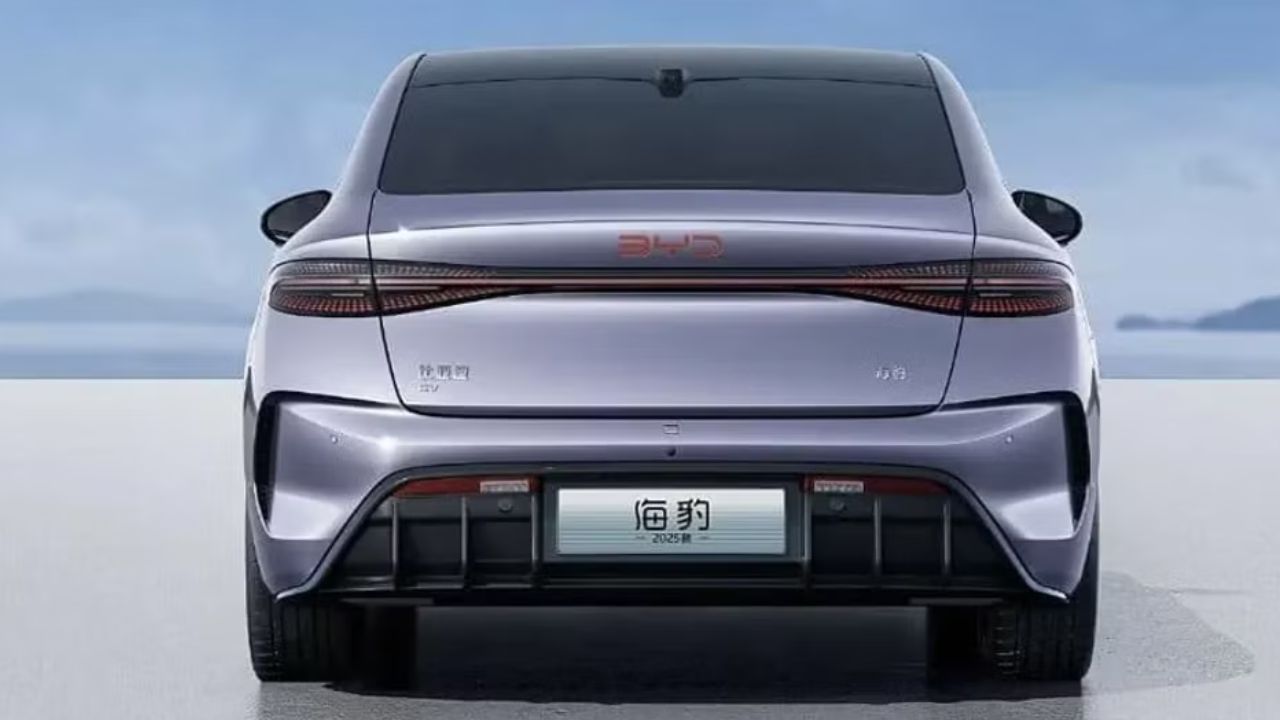BYD Seal Facelift Launched in China with LiDAR Tech, 800V Platform, and 510 Km Range
The LiDAR technology is the most significant improvement to the newly launched BYD Seal. The cars equipped with this tech use external cameras positioned around the vehicle, producing a feed sent through a 'vision' processor.

BYD, the Chinese EV maker, is revamping its Seal lineup in its home market with a new 800V platform and a LiDAR sensor. It will also include a plug-in hybrid option. After the Sea Lion 07, the 2025 Seal is the second vehicle built on the new 3.0 Evo platform. The standard model costs 175,800 yuan (roughly Rs 20.56 lakh), while the top-of-the-line AWD variant costs 239,800 yuan (about Rs 28.05 lakh). The LiDAR or Light Detection and Ranging Sensors technology is the most significant improvement to the BYD Seal, generating a lot of discussion in the electric vehicle (EV) market. The cars equipped with this tech use external cameras positioned around the vehicle, producing a feed sent through a 'vision' processor.
Also Read: 2024 BYD Atto 3 vs MG ZS EV Spec Comparison: Which is Better?
BYD Seal Facelift: Mechanical Specs
The recently modified Seal sedan has a LiDAR sensor installed on the roof and is now powered by an 800-volt platform. The car can now travel up to 240km/h at its highest speed, and the top version can accelerate from 0 to 100km/h in 3.8 seconds. According to several industry reports, the 800V platform enables a 10% to 80% charge in approximately 25 minutes. The CLTC range of the new Seal is 510km to 650km with two "blade" battery options (61.44kWh and 80.64kWh). A 308.4bhp rear motor is an option for more powerful models, whereas the standard model has a 228bhp rear motor. The highest trim level model comes with all-wheel drive and 523bhp. The proportions of the vehicle won't alter.

There are two choices for the PHEV Seal 07 DM-i. For lighter variants, customers can choose a 1.5-litre engine, producing 99.2bhp when connected with a 214.5bhp electric motor, or a 1.5-litre turbocharged engine, generating 154bhp when coupled with a 268bhp electric motor. Under the CLTC cycle, these have electric ranges of 70km and 125km, respectively. It has many comfort features, Level 2 driving assistance, and up to 50W wireless charging capacity.
BYD Seal Facelift: Exterior and Interior
The Seal sedan's modifications are not immediately apparent from the outside unless you look closely. New alloy wheels, a light purple colour option, and a red BYD emblem on the tailboard are also available. The primary modification is a LiDAR sensor placed on the roof, which is supposed to enhance the Seal's automated parking and adaptive cruise control features.

More notable changes to the Seal facelift's interior include a new flat-bottom four-spoke steering, a dual-tone grey and tan leatherette theme, and a sleeker, black-finished dashboard. Previously located on either side in the pre-facelift model (available for purchase in India), the central AC vents have been moved beneath the sizable infotainment screen.
Also Read: BYD Unveils New Hybrid Powertrain with Ultra-Long Range; Claims 100Km with 2.9-Litre Fuel
BYD Seal: Competitors
When the Seal facelift will be available in India is not yet known. The 2024 model, which costs between Rs 41 lakh and Rs 53 lakh, went on sale in India in March this year. The Volvo XC40 Recharge (Rs 54.95 lakh–57.90 lakh) and the Hyundai Ioniq 5 (Rs 46.05 lakh) are competitors of the electric sedan in its price bracket. However, it does not have any direct rivals.


.webp)



.webp)

.webp)
















Write your Comment on